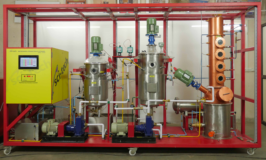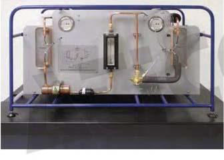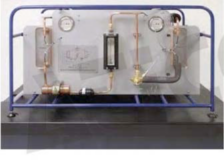Steam Power Plant - 20KW BSG 010
Home » Products » Steam Power Plant – 20KW BSG 010
Steam Power Plant – 20KW BSG 010
Sci-tech Steam Power Plant Model BSG 010S is an Energy Conversion Equipment used to obtain useful power or electricity from fuels by generating steam at high pressures and temperatures and absorbing the energy contained in the steam in a turbine. The turbine is coupled to devices such as Generator, Pump or Compressor. Thus the energy contained in the fuel is converted to useful purposes.
| Size: | 250cm x 150cm x 125cm (LxWxH) |
| Weight: | 380 kg |
Item Description
Sci-tech Steam Power Plant Model BSG 010 for output up to 20KW, is an Energy Conversion Equipment used to obtain useful power or electricity from fuels by generating steam at high pressures and temperatures and absorbing the energy contained in the steam in a turbine. The turbine is coupled to devices such as Generator, Pump or Compressor. Thus the energy contained in the fuel is converted to useful purposes.
Steam Power Plants are complex and consist of several components which are of interest to various training fields such as Power Plant Engineering, Mechanical Engineering, Thermodynamics, Energy Conversion, Heat Transfer, Electronics and Controls.
Important Features
The Laboratory Scale Unit is designed and developed to enable students conduct experiments to study various functional aspects of Steam Power Plant and its components. The Unit consists of the following important components:
- Boiler with a Super Heater to generate super heated steam
- Turbine, Generator and a Loading system to absorb, measure and dissipate the energy transferred from the steam to the turbine.
- Condenser Heat Exchanger to condense steam exhausting from the turbine
- Cooling Tower and Pump to cool the condensate from the Condenser and feed the water back to the Boiler.
The Boiler unit is fed by a Fuel Tank and the Feed Water. Feed Water Treatment includes Regenerating-ion exchange and chemical metering. The water-steam circuit can be operated in closed, Open or partially open modes. All components of the unit are designed and fabricated as per the established norms for safety of devices.
All relevant properties and parameters will be measured using Sensors and Transducers and important parameters are displayed on the Control Panel – HMI. The Unit is self sufficient and complete with instrumentation, PLC based monitoring and control and ‘Sci-CalR’ based data acquisition and processing.
In addition to the basic studies related to the steam power plant and its components, the equipment provide all arrangements of measurements and data acquisition to conduct wide variety of experiments related to properties of steam, single cylinder steam engine, flow through nozzles, heat transfer in power plant components, feed water treatment and cooling tower performance.
See also different:

Sci-tech Power Generator Plant using ‘Municipal Waste’ Model BSG 027 now offers a unique solution of generation of power from garbage or solid waste that the household or farmers or industry generates! Municipal Solid Waste has become a contag [...]



